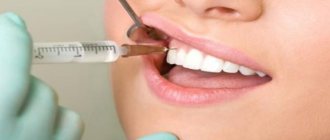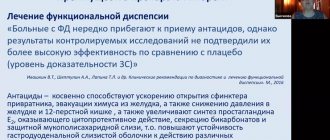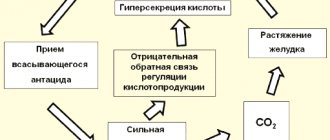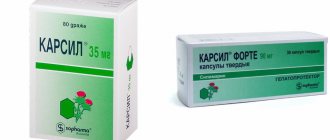Ultracain® D-S (Ultracain® DS)
The drug is intended for use in the oral cavity and can only be injected into tissues where there is no inflammation.
It is impossible to inject into inflamed tissues.
The drug cannot be administered intravenously. In order to avoid accidental release of the drug into the blood vessels, an aspiration test (in two stages) should always be performed before its administration.
The main systemic reactions that may develop as a result of accidental intravascular administration of the drug can be avoided by following the injection technique: after an aspiration test, slowly inject 0.1-0.2 ml of the drug, then, no earlier than 20-30 seconds later, slowly inject the remaining dose of the drug. The injection pressure should correspond to the sensitivity of the tissue.
For anesthesia during uncomplicated extraction of teeth in the upper jaw in the absence of inflammation, it is usually sufficient to create a depot of the drug Ultracaine®
D-S in the area of the transitional fold by introducing it into the submucosa from the vestibular side (1.7 ml of the drug per tooth). In rare cases, an additional injection of 1 ml to 1.7 ml may be required to achieve complete anesthesia. In most cases, this eliminates the need for a painful palatal injection. When removing several adjacent teeth, the number of injections can usually be limited.
For anesthesia for incisions and sutures in the palate to create a palatal depot, about 0.1 ml of the drug is required for each injection.
In the case of removal of mandibular premolars in the absence of inflammation, mandibular anesthesia can be dispensed with, since infiltration anesthesia provided by an injection of 1.7 ml per tooth is usually sufficient. If in this way it was not possible to achieve the desired effect, an additional injection of 1-1.7 ml of anesthetic should be performed into the submucosa in the area of the transitional fold of the mandible on the vestibular side. If in this case it was not possible to achieve complete anesthesia, it is necessary to conduct a conduction block of the mandibular nerve.
When treating cavities and grinding teeth for crowns, with the exception of the lower molars, depending on the volume and duration of treatment, the administration of the drug Ultracaine is indicated®
D-S in the area of the transitional fold on the vestibular side in a dose of 0.5-1.7 ml per tooth.
When performing one treatment procedure, adults can be administered articaine in a dose of up to 7 mg per 1 kg of body weight. It was noted that patients tolerated doses up to 500 mg (corresponding to 12.5 ml of solution for injection) well.
For pediatric patients (over 4 years of age), the minimum doses necessary to achieve adequate anesthesia should be used, the dose of Ultracaine®
D-S is selected depending on the age and body weight of the child, but the dose of articaine should not exceed 7 mg per 1 kg of body weight (0.175 ml/kg). The use of the drug in children under 1 year of age has not been studied.
For elderly patients and all patients with severe renal and hepatic insufficiency, it is possible to create increased plasma concentrations of articaine. For these patients, the minimum doses necessary to achieve a sufficient depth of anesthesia should be used.
Ultracaine D-S forte solution d/in 40 mg/ml+0.01 mg/ml 1.7 ml No. 100 (cartridge)
The incidence of side effects listed below was determined according to the following gradation: very often (> 1/10), often (> 1/100, < 1/10), infrequently (> 1/1000, < 1/10). 100), rare (> 1/10000, < 1/1000), very rare (< 1/10000), including isolated reports, frequency unknown (it is not possible to determine the frequency of occurrence based on available data).
Nervous system disorders
Often
Paresthesia, hypoesthesia, headache, mainly due to the presence of epinephrine in the drug.
Infrequently
Dizziness.
Frequency unknown
Dose-dependent reactions from the central nervous system: agitation, nervousness, stupor, sometimes progressing to loss of consciousness, coma, respiratory disorders, sometimes progressing to respiratory arrest, muscle tremors, muscle twitching, sometimes progressing to generalized convulsions.
Sometimes, if the correct injection technique is not used when administering a local anesthetic in dental practice, damage to the facial nerve can occur, which can lead to the development of facial paralysis.
Visual disorders
Frequency unknown
Visual disturbances (blurred vision, mydriasis, blindness, double vision), usually reversible and occurring during or shortly after injection of a local anesthetic.
Gastrointestinal disorders
Often
Nausea, vomiting.
Disorders of the heart and blood vessels
Infrequently
Due to the content of epinephrine in the drug, the development of tachycardia, heart rhythm disturbances, and increased blood pressure is very rarely possible.
Frequency unknown
Decreased blood pressure, bradycardia, heart failure and shock.
Immune system disorders
Frequency unknown
Allergic and allergy-like reactions may develop. At the injection site, they may manifest themselves as swelling or inflammation of the mucous membrane. Manifestations not related to the injection site may include skin hyperemia, itching, conjunctivitis, rhinitis and angioedema. Angioedema may manifest as swelling of the upper and/or lower lip, cheeks, swelling of the vocal cords with a feeling of a lump in the throat and difficulty swallowing, hives and difficulty breathing. Any of these manifestations can progress to anaphylactic shock.
General and administration site disorders
Frequency unknown
In some cases, with accidental intravascular administration, zones of ischemia may appear at the injection site, up to tissue necrosis.
In children
In the studies conducted, the safety profile in children and adolescents aged 4 to 18 years was comparable to that in adult patients. However, due to prolonged anesthesia of the soft tissues of the oral cavity, soft tissue damage was more often observed in children (in 16% of children), especially at the age of 3 to 7 years. In a retrospective study of 211 children aged 1 to 4 years, dental procedures performed with 4.2 ml of 4% articaine and 0.01 mg/ml epinephrine did not cause adverse reactions.
Side effects
When treated with Ultracaine, various side effects may occur that affect the activity of the central nervous, digestive and immune systems, and organs of vision. Some patients experience headaches and abnormalities in the normal functioning of the cardiovascular system, such as arrhythmia , increased blood pressure and palpitations .
The development of undesirable reactions in patients with bronchial asthma is possible, for example: disturbances of consciousness, vomiting, diarrhea, an attack of bronchial asthma, shock and wheezing.
Information about the drug
Ultracaine is a combined local anesthetic drug that contains epinephrine and articaine. The first is a vasoconstrictor, the second is an amide anesthetic. When injecting the drug, loss of sensitivity occurs after the conduction of sensory impulses at the nerve endings ceases to function. The level of effectiveness is much higher than lidocaine and novocaine.
The main component of the anesthetic is articaine hydrochloride. The composition also includes sodium chloride and bisulfite, adrenaline and water.
There are 3 types of Ultracaine:
- D - does not contain epinephrine. Can be taken by allergy sufferers and those suffering from bronchial asthma.
- DS - epinephrine composition 1:200000 - is prohibited for use by asthmatics, but is acceptable for cardiovascular diseases.
- DS Forte - epinephrine 1:100000 - is not recommended for use in asthma, thyroid disease and hypertension.
The solution begins to act within one to two minutes after the injection and lasts up to an hour. Available in ampoules of 2 ml and cartridges of 1.7 ml.
Ultracaine DS during pregnancy and lactation
It is believed that the use of this local anesthesia has a non-stressful effect, providing adequate pain relief during various operations, including dentistry. of articaine penetrates the blood-placental barrier , so it can be used during pregnancy .
Once in the body, atricaine hydrochloride undergoes rapid disintegration and is then rapidly excreted, which ensures rapid elimination and does not allow large amounts to pass into breast milk. The use of this drug during lactation does not require even a temporary cessation of breastfeeding .
Price of Ultracain D-S, where to buy
Injection solution Ultracain D-S 40 mg+5 mcg/ml, 10 pcs. can be purchased at almost any pharmacy in Russia. Moreover, the cost of this drug varies between 464-610 rubles.
- Online pharmacies in RussiaRussia
- Online pharmacies in UkraineUkraine
ZdravCity
- Ultracaine D-S solution d/in.
(with epinephrine) 40 mg+0.005 mg/ml amp. 2ml No. 10Sanofi-Winthrop Industrie/Delpharm Dijon RUB 1,379 order - Ultracaine D-S solution d/in. (with epinephrine) 40 mg+0.005 mg/ml cartridges 1.7 ml No. 100 Sanofi-Aventis Deutschland GmbH / Sanofi Winthrop Industry
6400 rub. order
- Ultracaine D-S forte solution for injection. 1.7 ml 100 pcs. Sanofi-Aventis Deutschland GmbH / Sanofi Winthrop Industry
RUR 6,443 order
- Ultracaine D-S forte solution for injection. 2ml 10 pcs. Sanofi-Aventis Deutschland GmbH/Delpharm Dijon France
RUB 1,450 order
Pharmacy Dialogue
- Ultracaine D-S Forte ampoules 2ml No. 10Sanofi-Winthrop Industrie
RUB 1,433 order
- Ultracaine D-S ampoules 2ml No. 10Sanofi-Winthrop Industrie
RUB 1,353 order
- Ultracain D-S (cart. 1.7 ml No. 100)Sanofi-Aventis
RUR 6,236 order
- Ultracaine D-S (amp. 2 ml No. 10) Delpharm Dijon
RUB 1,340 order
show more
Pharmacy24
- Ultracaine D-S forte cartridge 1.7 ml No. 100 solution Sanofi-Aventis Deutschland GmbH, Germany/Sanofi Winthrop Industries, France
2214 UAH.order
Precautionary measures
Do not administer intravenously or inject into the area of inflammation. In patients with cholinesterase deficiency, it should be used only for urgent indications. For diseases of the cardiovascular system (chronic heart failure, pathology of the coronary vessels, angina pectoris, rhythm disturbances, history of myocardial infarction, arterial hypertension), cerebrovascular disorders with a history of paralysis, chronic bronchitis, emphysema, diabetes mellitus, hyperthyroidism, severe anxiety, it is advisable use of a drug containing a smaller amount of adrenaline. It is not recommended to combine with non-selective beta-blockers.
Overdose
The use of this drug in high doses can cause cases of overdose, signs of which may include: unexpected dizziness , impaired consciousness and motor restlessness . In this case, it is necessary to urgently stop administering the medication, place the patient in a horizontal position, and immediately monitor all hemodynamic parameters - pulse, blood pressure and airway patency. Further therapy is performed depending on the symptoms that appear and the severity of the disorders.





